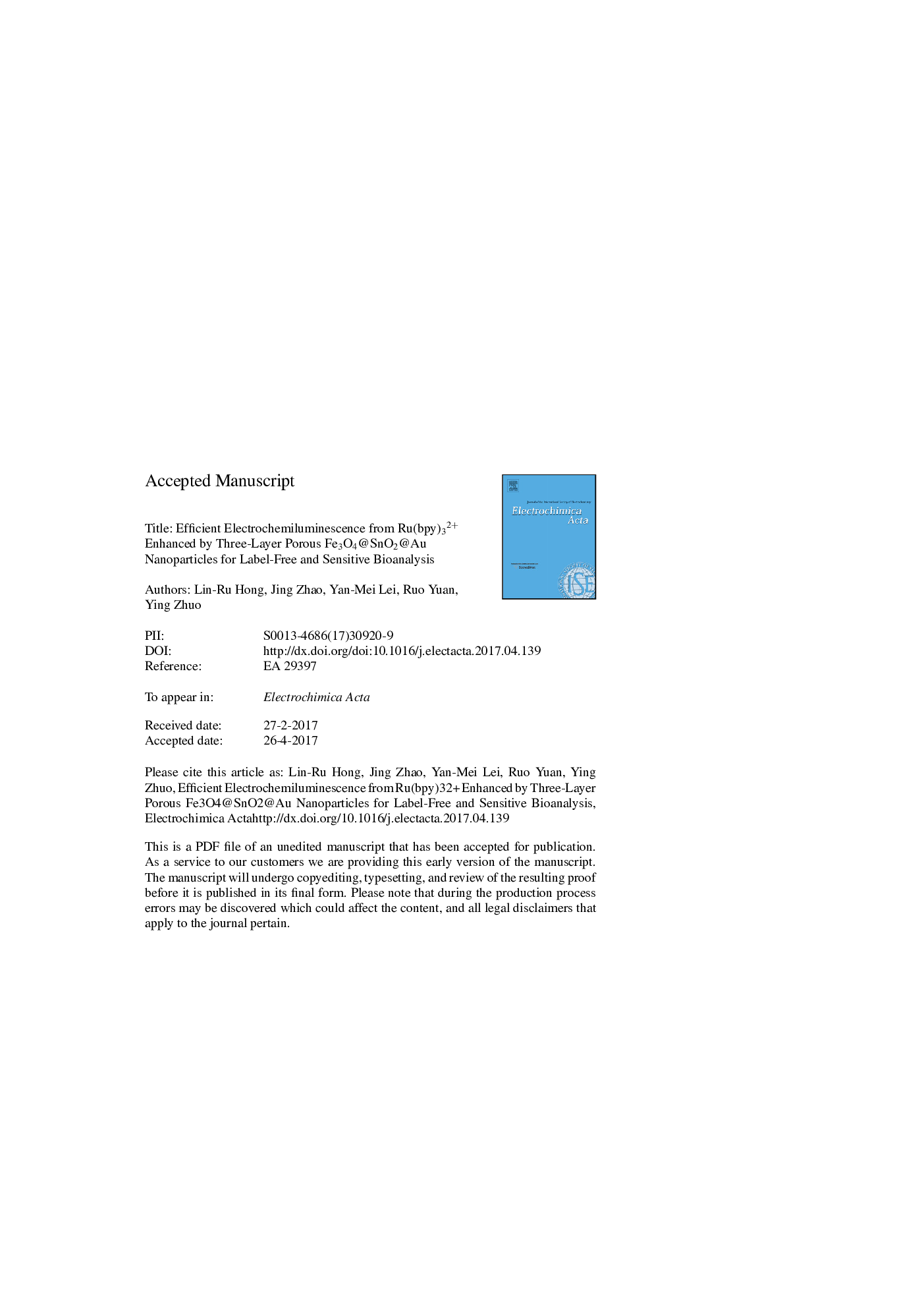| Article ID | Journal | Published Year | Pages | File Type |
|---|---|---|---|---|
| 4767018 | Electrochimica Acta | 2017 | 29 Pages |
Abstract
A label-free and sensitive electrochemiluminescence (ECL) aptasensor for thrombin (TB) was developed using three-layer porous nanoparticles of Au nanoparticles (Au NPs) decorated ferroferric oxide@stannic oxide (Fe3O4@SnO2@Au NPs) as multifunctional matrix for signal amplification. This system consists of Fe3O4@SnO2@Au NPs enhanced Ru(bpy)32+ as efficient luminophore and two ferrocene (Fc) molecules labeled thrombin binding aptamer (TBA) as quenching probe. Briefly, Ru(bpy)32+ was doped into a cation-exchange polymer of nafion (Ru-nafion), which was coated on bare glass carbon electrode (GCE). Then three-layer porous Fe3O4@SnO2@Au NPs were absorbed on the resultant GCE via electrostatic interaction. Subsequently, abundant amino-group functionalized assisted probes (NH2-APs) were loaded on the modified electrode based on Au-N bonding. With the base-pairing interaction, a quenching probe of two Fc molecules TBA could hybridize with NH2-APs to obtain a low background signal based on the quenching effect of Fc. In the presence of TB, the formed double-stranded DNA was dissociated and the obtained the structure of TB/Fc-TBA-Fc complex was released from the electrode surface, resulting in a proportional increase in ECL response with TB. As a result, the label-free and sensitive “signal-on” aptasensor displayed a wide linear range response for TB from 1Â ÃÂ 10â5 to 10Â nM with a low detection limit of 3.0 fM.
Related Topics
Physical Sciences and Engineering
Chemical Engineering
Chemical Engineering (General)
Authors
Lin-Ru Hong, Jing Zhao, Yan-Mei Lei, Ruo Yuan, Ying Zhuo,
